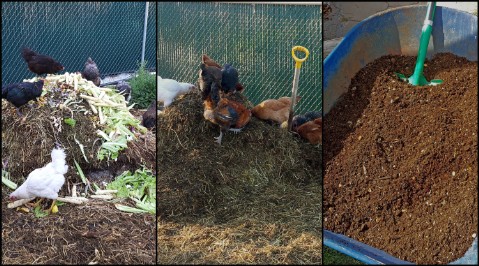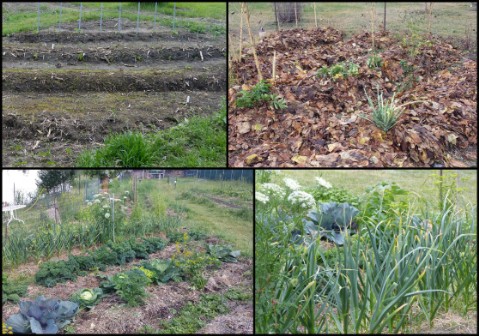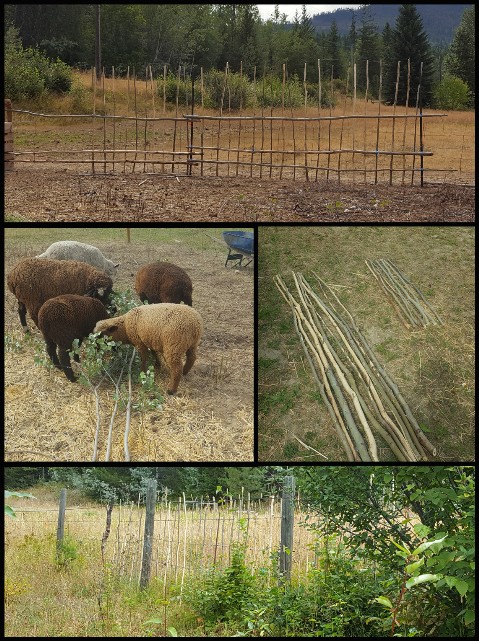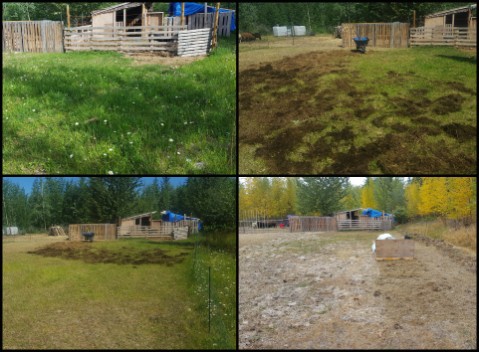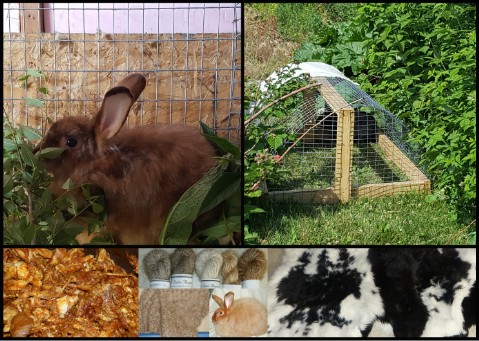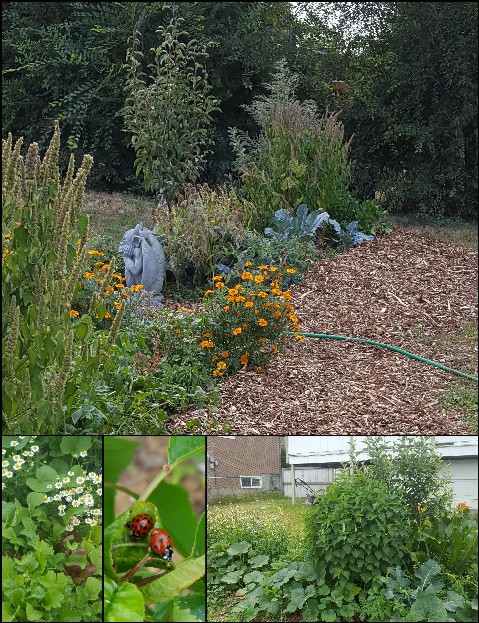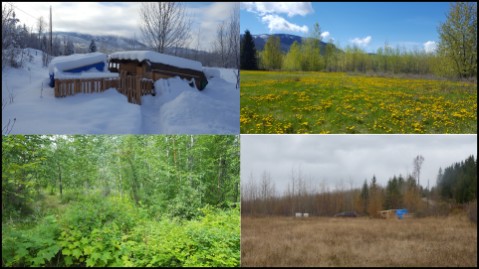- Wildhaven Permaculture Design
Main menu:
Wildhaven Farm Permaculture Projects
This page highlights some of the many ways I am implementing permaculture ethics and design in the various properties and projects I am working on or have worked on in the past. Most of these projects are just elements of a larger system, a few are more detailed examples of how the different elements work together as part of a larger integrated system. These projects are meant to give real life examples of permaculture in action and maybe inspire you to try a few yourself! Clicks on the links for each project to find out more!

Chicken Composting
Most of the compost used at Wildhaven Farm is created using an integrated chicken system. The raw piles are stockpiled goat and sheep bedding, manure and garden scraps. When a large pile has accumulated, the chickens start working! They are fed their daily scratch and some kitchen scraps on top of the pile. They happily loosen and turn the compost as they scratch around for feed before wandering off to find all kinds of other goodies around the farm. The compost contains lots of protein rich insects that the chickens love. This system has reduced our feed costs significantly while producing a quality compost for vegetable beds and the food forests. And the chickens get to spend their days happily doing what chickens do best -

Contour Beds -
In 2015 I reshaped a section of the garden at the Dallas farm location. Originally, we had tilled up the whole area and just built straight rows. Most of the garden is flat and straight rows work very well. However, roughly an eighth of the garden at the south end slopes up quite a bit and it seemed a perfect place to implement a contoured bed design to help prevent water run off and erosion of the soil and mulch. This project has been a dramatic success andis my favourite area in the garden from as asthestic point of view. Interestingly, I suspect that the extra attention I unwittingly pay to this section of garden, due to its more appealing nature, is the reason these five beds are among the most productive beds in this garden. An observation that I will certainly take into consideration when designing future gardens!

Aspen Pole Fencing -
This has been a fun project that is still very much a work in progress. It started out with me feeding a few aspen saplings to the sheep as I was clearing out new grazing areas. I noticed the "sticks" that were left over had been nicely stripped and were mostly straight. A few nips here and there with a set of secateurs and I had accumulated a pile of poles that I originally planned to use as garden stakes. I still hadn't really come up with a suitable solution for fencing the garden area. I needed some kind deer deterant that was not too costly. The recycled wire fencing that I had temporarily propped up to keep the sheep contained while they ate down all the vegetation in preparation for tilling, was saggy and not at all predator proof or deer proof. Or really anything "proof". I was happy that my hastily thrown together fence was able to deter my easy going flock from wandering, but it clearly was not going to work long term as a suitable barrier. I had seen pictures of woven wooden fences and wondered if I could weave the poles through the wire. A quick experiment later and I found the answer was a resounding YES!

Pasture Improvement -
We are 3 years into a project that I began as a demonstration of how a degraded piece of land can be rejuvinated without resorting to the plow and expensive seed. Most of this property is lovely and fertile but a small area had been used as a riding arena/pasture for horses and is compact, dry and weedy. This is one of the best demontrations of a successful regenerative system using animals and proof that livestock does not have to be destructive to the land.

Urban Rabbits -
I have owned rabbits for many years. Some as pets, most as a healthy protein source and a few for fiber production or tanned hides for handspinning and other crafts. Rabbits can fit into just about any permaculture design from the tiniest apartment system to a large ranch setting. For those who can't quite stomach the idea of eating them, they can still work for you in your system while providing companionship and entertainment. Angora rabbits, though more work, provide an added yield in their wool production without any harm to them. In 2017 I started working towards a more integrated system in an effort to move away from commercial feed. I started with some small scale experiments and with the results of those experiments in mind I made a more comprehensive plan to implement in 2018. It is my goal to see just how much yield (in meat, fiber, hides, excess animals for sale and compost) I can get from having the rabbits work WITH my food forest and garden.

Wilds Family Urban Farm
This project is the permaculture design for our family home in Kamloops BC. It is a large urban lot that we have owned since 2016. We moved there in May and the first season we got a good plan in place but the only planting we did was getting 6 fruit trees in the ground. In 2017 much more work was done on developing the food forest beds as well as refining our overall design after a year of observation. We have LOTS of big plans for developing this property into an excellent example of urban permaculture design! SOme of our workshops in 2019 will be held at this location and I plan to provide lots of updates on progress with implementation of design elements as well as growth and change of the food forest and annual vegetable gardens as they mature over the next several years.

Wildhaven Farm -
This project is a small scale permaculture farm that I have been developing since 2016. It is the property that I used as my final design project for my PDC. My goal with this project is to implement the design/systems using as little machinery or large scale methods as possible. It is completely off grid -
